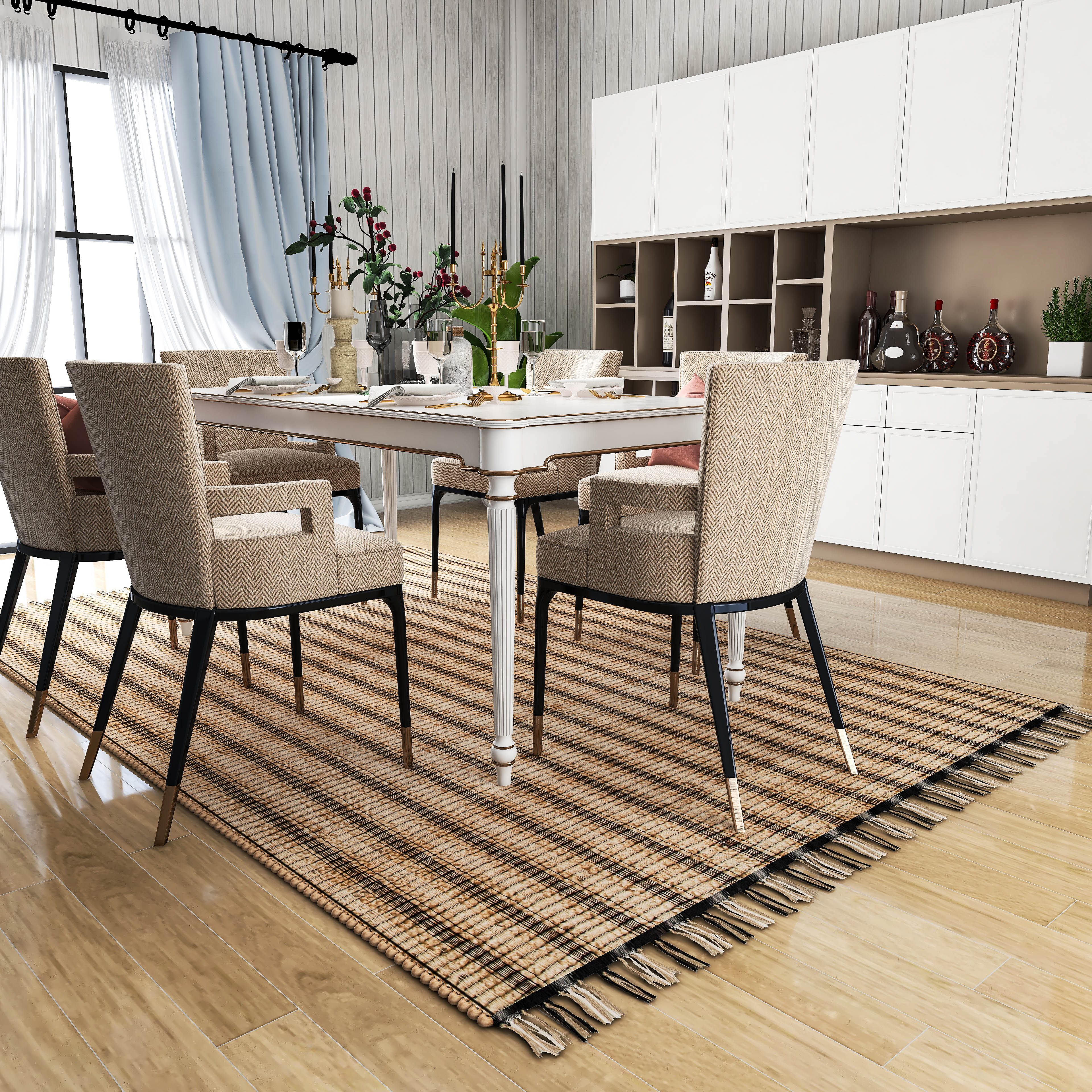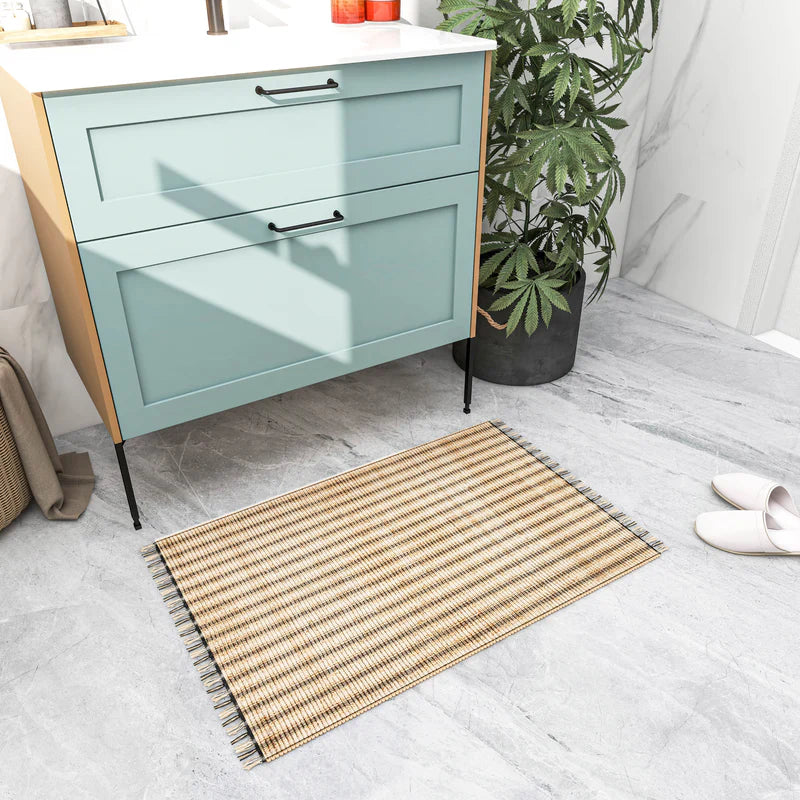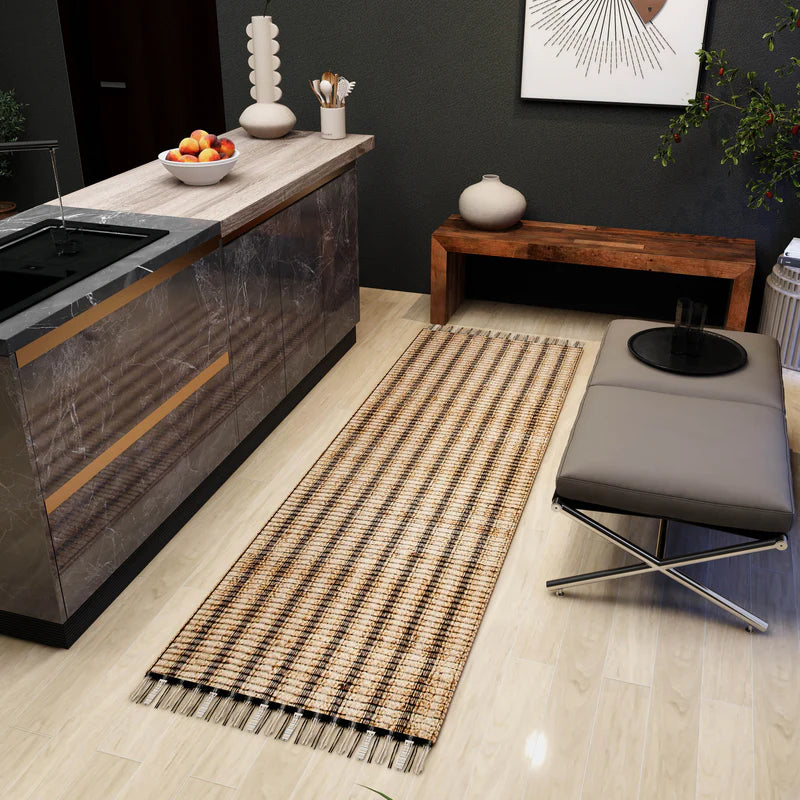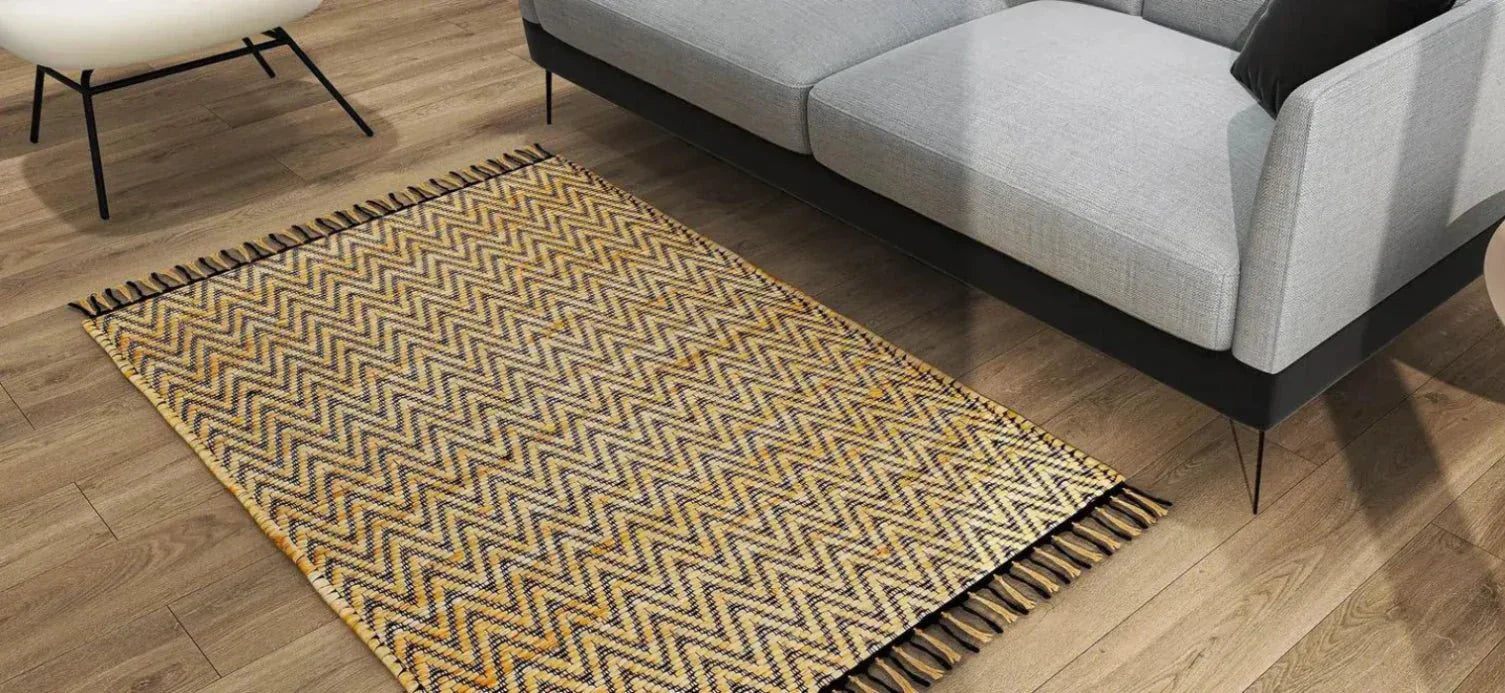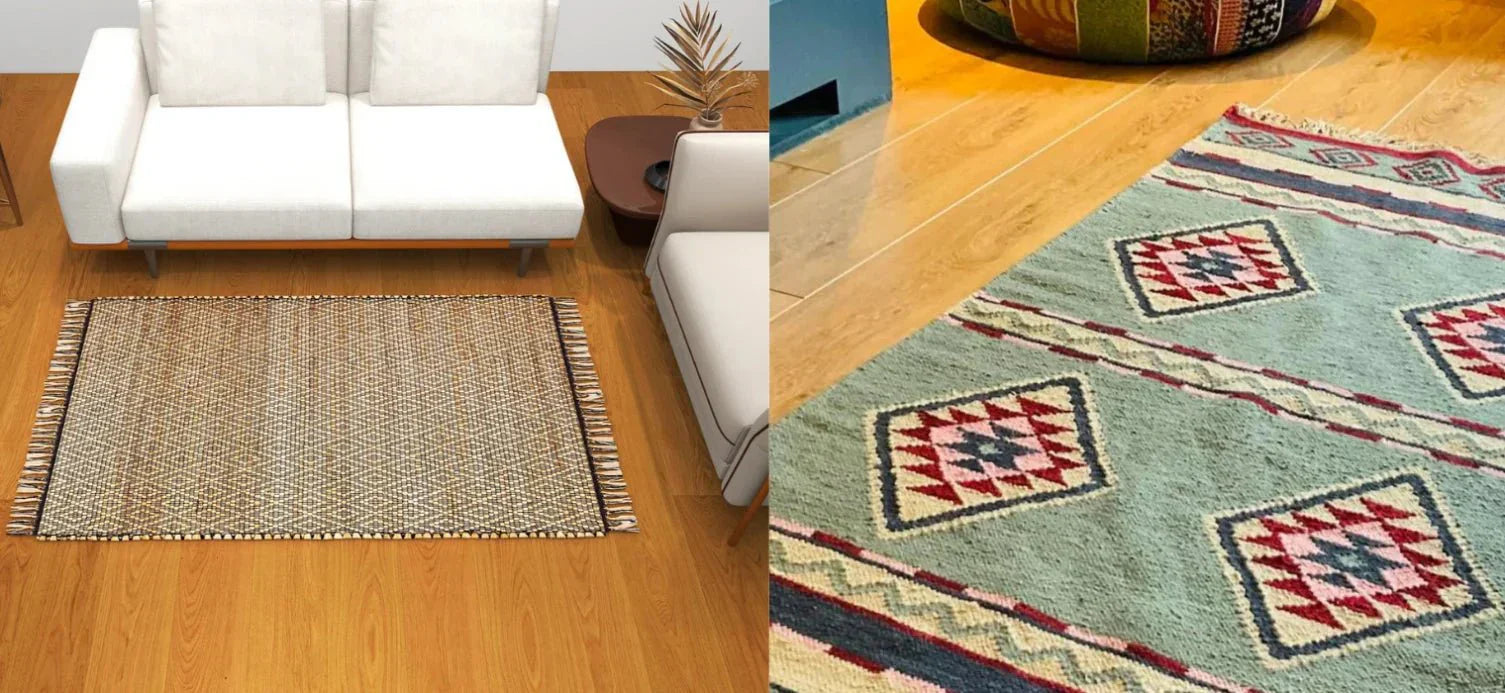
Jute vs Wool Rugs: Pros and Cons of Each Rug Type
Key Takeaways:
- Durability: Wool rugs last longer than jute, ideal for high-traffic areas.
- Cost: Jute rugs are more affordable, but wool offers long-term value.
- Eco-friendliness: Both are sustainable, with jute being plant-based and wool renewable.
- Maintenance: Wool requires more care but is stain-resistant; jute is sensitive to moisture.
When choosing the perfect rug for your home, the debate between jute vs wool rugs often comes up. Each material has its own set of qualities that appeal to different lifestyles and decor preferences.
But which one is right for you? To help make the decision easier, we’ll explore what jute rugs and wool rugs are made of, their pros and cons, and answer the question: Is jute or wool better for rugs?
What is a Jute Rug Made Of?
Jute rugs are crafted from the fibers of the jute plant, a natural, eco-friendly material that has gained popularity due to its sustainability. Jute is one of the most affordable natural fibers, often costing around 30-40% less than wool. The global jute market is valued at approximately $2.3 billion as of 2022, with jute fibers being widely used for eco-friendly products, including rugs.
Pros of Jute Rugs:
- Eco-friendly: Jute is biodegradable and renewable.
- Affordable: Jute rugs are typically less expensive than wool rugs. For example, a typical 8x10 jute rug can range from $100 to $300, whereas wool rugs of the same size are often priced between $500 and $1,500.
- Textural appeal: These rugs add an organic, rustic feel to any room.
Cons of Jute Rugs:
- Not ideal for high-traffic areas: Jute can wear down quickly in heavily used spaces.
- Prone to water damage: These rugs don’t handle moisture well and can develop mold or mildew if exposed to water.
What is a Wool Rug Made Of?
Wool rugs are made from the soft, dense wool sheared from sheep, which provides a thick and luxurious texture. Wool is valued for its natural durability and is one of the oldest materials used in rug-making. In fact, the wool industry generates more than 2 million tons of wool annually, contributing significantly to the global textile market.
Pros of Wool Rugs:
- Durable and long-lasting: Wool rugs can last for 20 to 30 years or more with proper care, making them a great long-term investment.
- Natural stain resistance: Wool fibers repel dirt and liquids due to their natural lanolin coating.
- Excellent insulation: Wool provides warmth in colder climates and can reduce heating costs by up to 10% due to its insulating properties.
Cons of Wool Rugs:
- Higher cost: Wool rugs are more expensive than jute due to the labor-intensive process of obtaining and processing wool.
- Sensitive to moth damage: Wool can attract pests like moths if not well-maintained.
Jute vs Wool Rugs: Key Differences
When comparing jute vs wool rugs, it’s important to consider both materials' durability, cost, and aesthetic appeal. Jute rugs offer affordability and an eco-friendly option, while wool rugs provide comfort, luxury, and durability.
- Durability: Wool rugs generally last longer than jute, making them better for high-traffic areas. Wool can withstand up to 25,000 bends before breaking, whereas jute fibers break down much sooner under pressure.
- Cost: Jute rugs are more budget-friendly, while wool rugs tend to be a significant investment. For example, wool rugs are often 2-3 times more expensive than jute rugs of the same size.
- Maintenance: Wool rugs require more care to avoid moths, while jute rugs are more sensitive to moisture and dirt buildup.
Ultimately, the choice between jute vs wool rugs depends on your personal needs, budget, and lifestyle. If you’re seeking an affordable, eco-friendly rug for low-traffic areas, a jute rug might be the right fit. However, if you want a durable, luxurious option for high-traffic spaces, investing in a wool rug is likely the better choice.
Wool rugs are more expensive than jute, but the investment can be worth it for long-term durability and comfort. With wool lasting up to three decades and jute offering eco-friendly benefits, both materials have something unique to offer. If you're still undecided, consider testing a small rug in each material to see which one best complements your home.
FAQs:
Are jute rugs good for high-traffic areas?
Jute rugs are not ideal for high-traffic areas as they tend to wear down faster compared to more durable materials like wool or polypropylene.
Are wool rugs good for homes with pets?
Yes, wool rugs are naturally stain-resistant and durable, making them a good choice for homes with pets.
What is the difference between jute and wool rugs in terms of maintenance?
Jute rugs are more susceptible to moisture and dirt, while wool rugs need protection from moths and require regular cleaning to maintain their appearance.
Is jute or wool better for allergies?
Wool is hypoallergenic and resists dust mites, making it a better choice for allergy sufferers than jute.
Which is more eco-friendly, jute or wool rugs?
Both jute and wool are eco-friendly materials. Jute is plant-based and biodegradable, while wool is a renewable resource that can be sustainably harvested.





